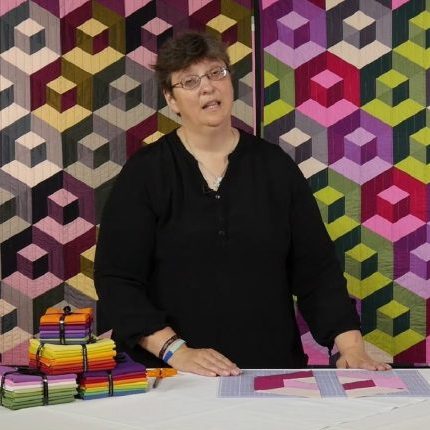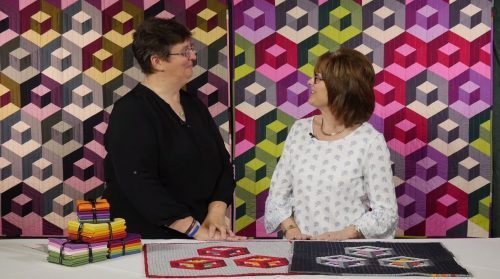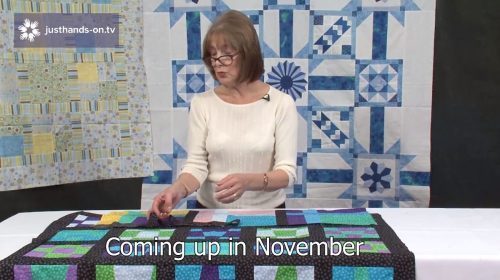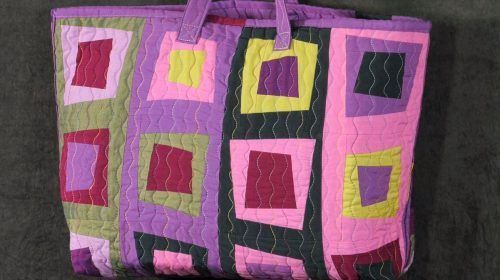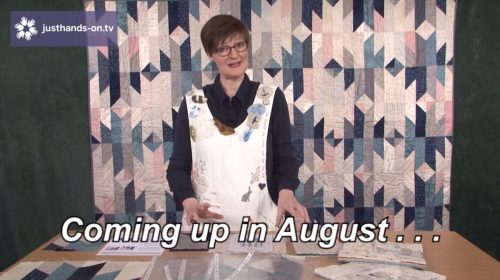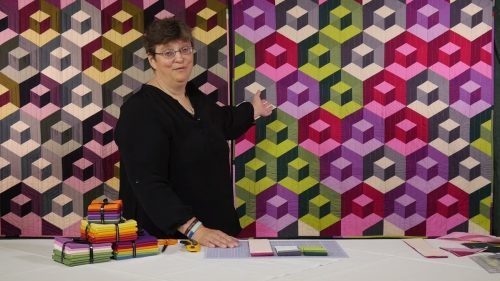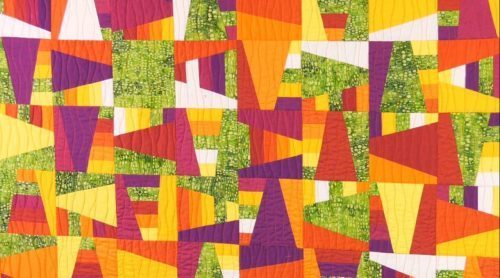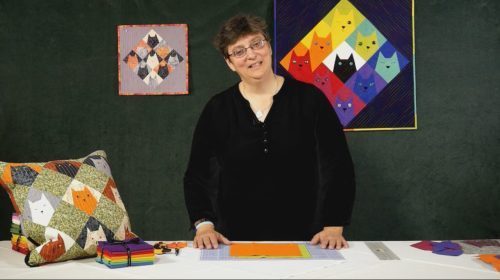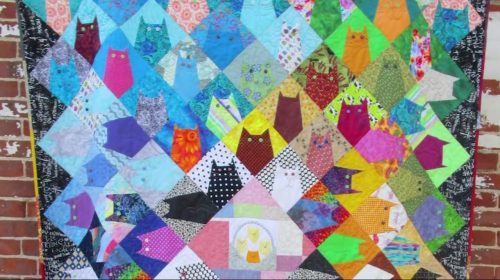About Helen
Helen can’t remember a time when she wasn’t making something. As a young child her greatest joy was the ‘useful box’ which lived in the cupboard under the stairs and was the repository for empty egg boxes, cereal packets and yogurt pots, all fantastic stuff to feed a creative mind.
When Helen was seven her Grandmother taught her to sew and opened her mind to a whole new avenue of creative expression. Helen designed and made her first full size cross-stitch sampler before she was nine, and made various garments for dolls and bears and eventually herself, creating patterns by the simple method of lying on the floor and drawing round herself, much to the amusement of her Mother & Grandmother – both accomplished dressmakers.
Helen worked in graphics, and then advertising, for ten years, until she and her partner had the opportunity to quit the London rat-race and move to Yorkshire to run the family’s marina business. During this time, Helen taught herself patchwork, quilting, beading, origami, marquetry, doll making and canvas work. She discovered that, not only does she love crafting and the challenge of learning something new, she also had a hitherto undiscovered competitive streak deep inside which prompted her to hone these new skills to the point where she regularly won awards in the handicrafts section of shows.
Fifteen years later, Helen decided to combine her experience of running a business with her enduring passion for crafting to start LITTLE PATCH POCKETS. Helen creates patchwork designs and writes patterns so you can make your own unique, lovely things. She also offers kits, classes and workshops where she teaches her designs.
Helen loves using three dimensional illusions in her work. According to Helen, “I love to create an illusion of three dimensions and many of my designs are based on this concept. I do occasionally use curved lines, but since my mind seems to work in straight lines I find lots of inspiration in architecture, engineering and even mathematical concepts. I like accurate piecing and often create my own foundation paper pieced blocks in order to achieve the precision I enjoy.”
Helen is an avid follower of the Modern Quilt Movement as well as a great believer that quilts are for using: “for your three-year-old to drag down the garden, for the dog to sleep on and to go in the washing machine.”
Signature Technique
Modern Quilting
Helen’s Top Tips
- Colour choice is key to 3D work. Always select three shades of the same colour, or light, medium and dark tones of the same colour.
- Auditioning fabrics is one of the most useful skills any patchwork artist can develop. A quilt needs contrast of tone, however subtle, to accentuate the design.
- Never use a fabric with a low thread count or a loose weave, however good the colour. Thinner fabrics do not handle well, will fray quickly and will not wear well in the finished quilt. It is worth investing in good fabrics.
- Many of the fabrics at the cheaper end of the market cover up this deficiency with excessive amounts of surface ink and stiffening treatments – the secret is to turn to the back and check.
- Always look for a fabric that is likely to shrink only minimally. Some shrinkage is to be expected, especially when combining fabrics from different manufacturers. Look on this as part of the charm of a washed quilt. However, cheap fabric with an open, loose weave will shrink hugely when washed, ruining your work.
Videos
Books and Patterns
Posts
7th February 2014
Here we are in February (after a 5 week January [...]
Printing images onto fabric
I wish to make a cot quilt for my expected grandchild and would like to make some of the squares personalised by printing images from my computer onto the fabric. I see there are several methods of achieving this and wonder if in your experience you could recommend a tried and tested way. As this is for a baby, it will obviously be subjected to washing so the method needs to produce waterproof squares Answer: As far as I am aware the fabrics that have been designed to go through your printer for use with your computer work well - and I am not aware that the brand makes any difference. These should be readily available from your quilt shop (or www.creativequilting.co.uk).
You could also use a method which uses fixing ink - but that is a little messier - but used by the textile girls a lot and I think produced by a company called Electric Quilt (who design computere software) and I know is stocked by The Cotton Patch and possibly Art Van Go as well as they are great suppliers of all things required by textile artists.
Does the Microtak gun make holes in the quilt?
Well its a yes and a no; the original gun did have HUGE tags that made really nasty holes and I refused to use or stock them (I owned a quilt shop at the time); however the current generation has a much smaller needle and tiny tags which hold the layers better since we have moved to flatter wadding and don't make holes in the fabric. I use them all the time and despite having several 000 in each box seem to be constantly running out!!!!
TIP: do invest in a tack remover as well as this will keep your quilt safe from little snips from your scissors and also stop you being tempted to use your best scissors to remove them (and spoil your scissors) NB: all these products are in the shop

